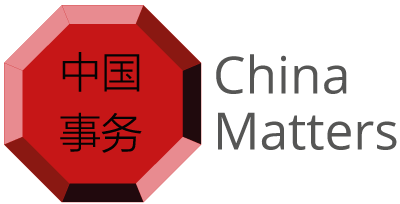STANCE #28 – MAY EDITION
By Jeff Yu
Trade was essential to the bilateral relationship between Australia and the People’s Republic of China (PRC) long before the two countries established diplomatic relations in 1972. The government-owned Wheat Board started exporting wheat to the PRC in 1960, when the young Communist regime was experiencing the Great Chinese Famine of 1959-1961. When Gough Whitlam first visited Beijing as opposition leader in 1971, he shrewdly used the decline of Australia’s wheat export to the PRC as a matter of concern, turning it into an opportunity to open the ‘door of China’s forbidden city’ for Australia. At that time, ‘the separation of politics and trade’ was seen as an artificial divide.
Back then, few people outside political circles in either country would have envisioned that half a century later, the PRC would become Australia’s largest trading partner for both imports and exports or that Australia would rank eighth for the PRC. Yet this comparison is very static. The PRC is the world’s second-largest economy and largest trading nation. It is the largest trading partner of 100 economies globally – of which Australia happens to be just one. If Australia’s trade is too dependent on the PRC, then so too is the deeply interconnected world economy.
Where does Australia fit in the bigger picture? Australia is currently the world’s 14th largest economy and 23rd largest trading nation. Australia greatly benefits from the complementarity of its and the PRC’s economies, allowing it to rank as the PRC’s number eight in terms of two-way trade. And while Australia maintains a trade deficit with its second and third largest trading partners, the U.S. and Japan, Australia has a comfortable trade surplus with the PRC. Two-way trade is in Australia’s favour, and Australia should concern itself not with reinventing its trade relationship with the PRC, but with stabilising it.
Australia rightly worries that its economy is too exposed to the PRC. A number of factors – slowing economic growth, economic structural change or diplomatic tensions – could reduce PRC demand for Australian iron ore, coal, or education, deeply affecting the Australian economy. For Australia to avoid or mitigate these risks, the following strategies are recommended:
- Form a coherent ‘whole of nation’ China policy with bipartisan support.
Despite frequent leadership changes, the Australian government must form a coherent China policy to anchor bilateral relations in a ‘whole of nation’ approach. China Matters’ recent ‘A new China narrative for Australia,’ to be finalised through public consultation and proposed to the newly-elected government, is instrumental for reshaping Australia’s China policy. The paper could go one step further with consideration from the opposition party, resulting in a stable China policy that does not shift regardless of domestic political cycles or governing party leadership changes.
- Hold more frequent and effective high-level bilateral dialogues.
The Chinese president and premier have not made any official visits to Australia since March 2017. An Australian prime minister made a bilateral visit last in April 2016. This is not a positive sign. Australian Prime Minister Scott Morrison met with Chinese Premier Li Keqiang on the sidelines of leaders’ meetings for East Asian cooperation in November 2018. Bilateral governmental dialogues at the highest levels appear to be somewhat obstructed, if not frozen. To address Australia’s trade concerns with the PRC, Morrison must be more proactive in reaching out to his Chinese counterpart and re-engage in a more effective manner. Additionally, more structured, multi-track dialogues bringing together key senior officials from both countries’ defence, treasury, and foreign affairs and trade ministries would provide broader forums for settling diplomatic uncertainties, including in trade.
- Reinforce existing bilateral and multilateral economic agreements.
Australia and the PRC are members of multiple bilateral and multilateral economic organizations facilitating trade and investment that could benefit from reinforcement or upgrade. The China-Australia Free Trade Agreement (ChAFTA), for example, has ‘built-in review mechanisms’ after the implementation stage. Given Australia’s concerns over difficulties that some of its goods and services may experience entering the PRC market, it would be in Australia’s national interest to address these issues with the PRC by including them into the ChAFTA review process, keeping the agreement fit for purpose. Similarly, playing a more active role to engage with the PRC in other economic multilaterals could help put Australia’s trade with the PRC on firmer footing.
Australia’s trade may be too dependent on the PRC, but in a way that merely reflects the global dependency of the world on the PRC. The PRC will remain interested in trading and forging a closer economic partnership with Australia – just as it was in the 1960s.
Jeff Yu is a Macroeconomic Analyst at a foreign bank in Australia. Prior to this, he has held positions at Yatsen Associates and JD Capital. His interdisciplinary research skills in Australia-China relations were initially developed through an internship program at Australian Studies Centre, Peking University. Jeff holds a Master of Economics (Finance) from Renmin University of China and a Master of Business (International Business) from the University of Newcastle respectively.
The opinions expressed in this article are the author’s and do not represent the views of China Matters

